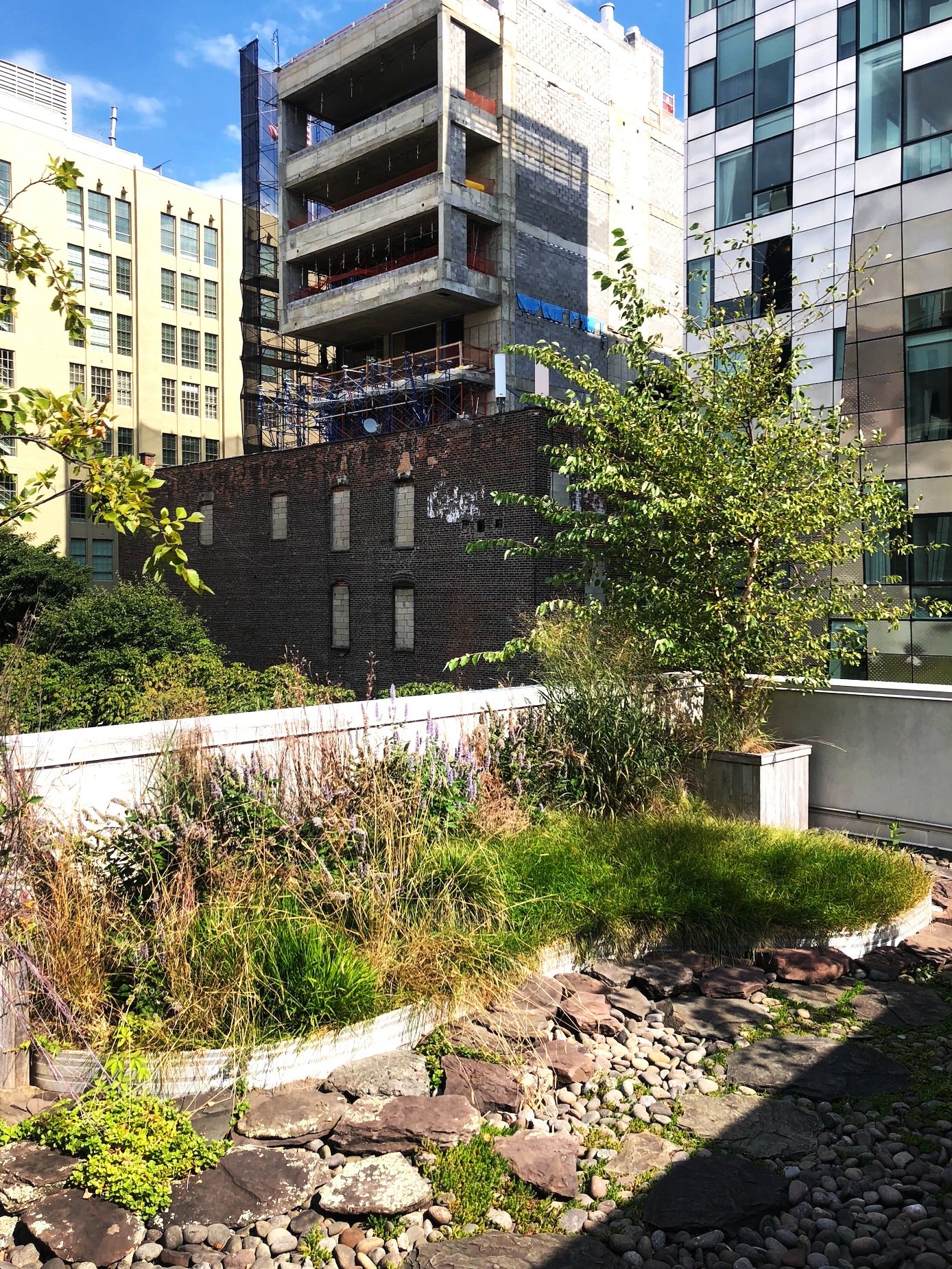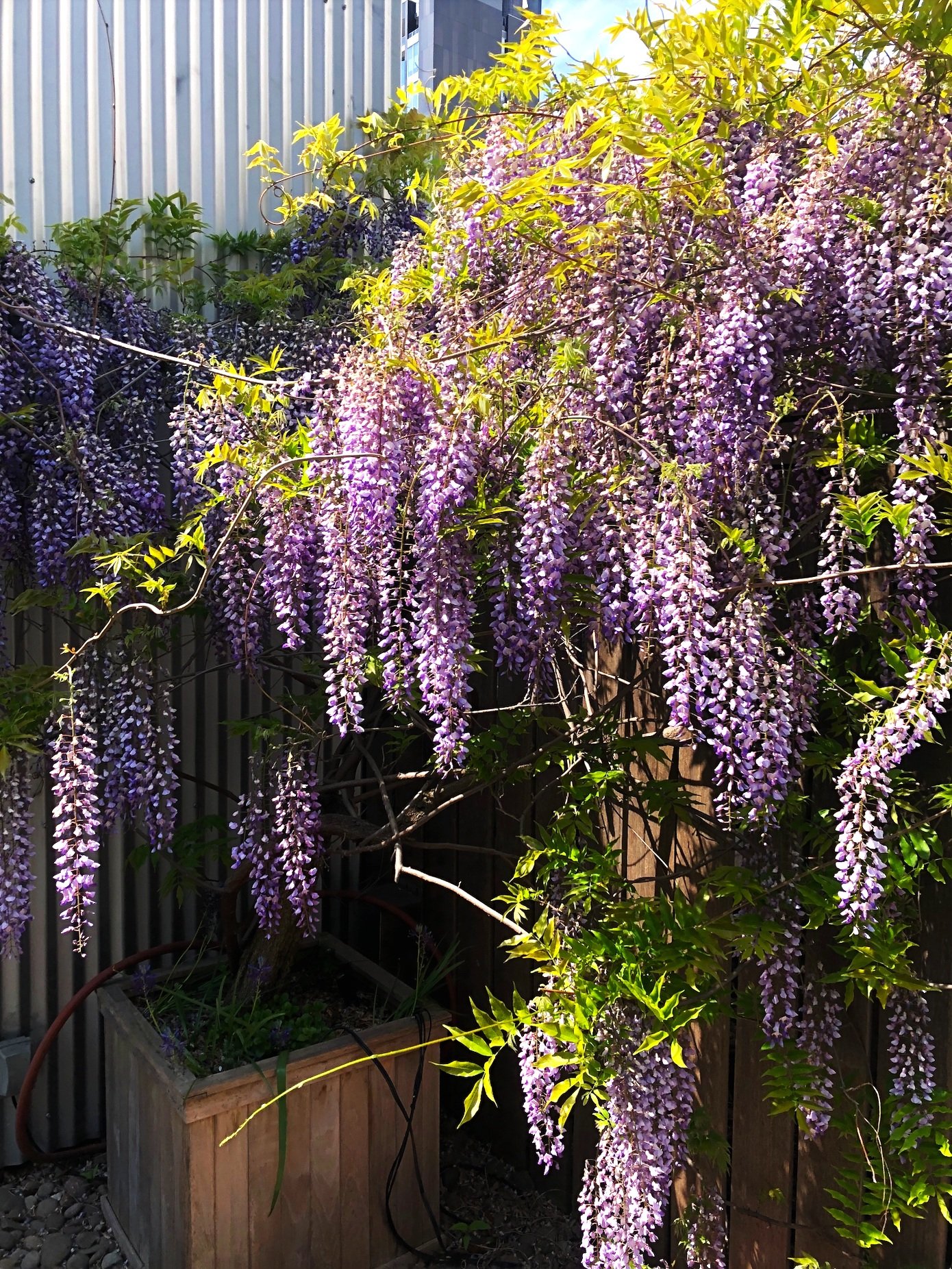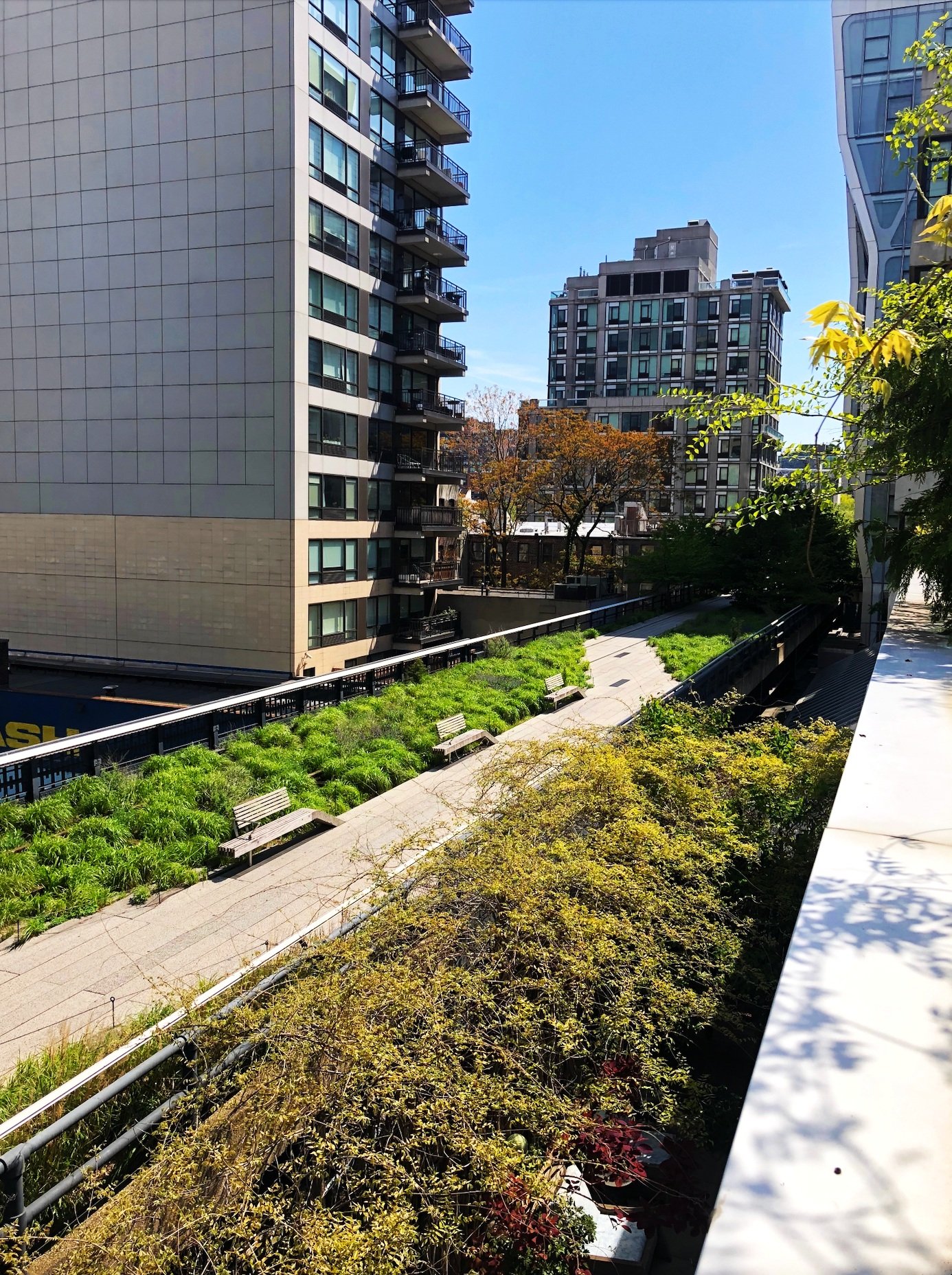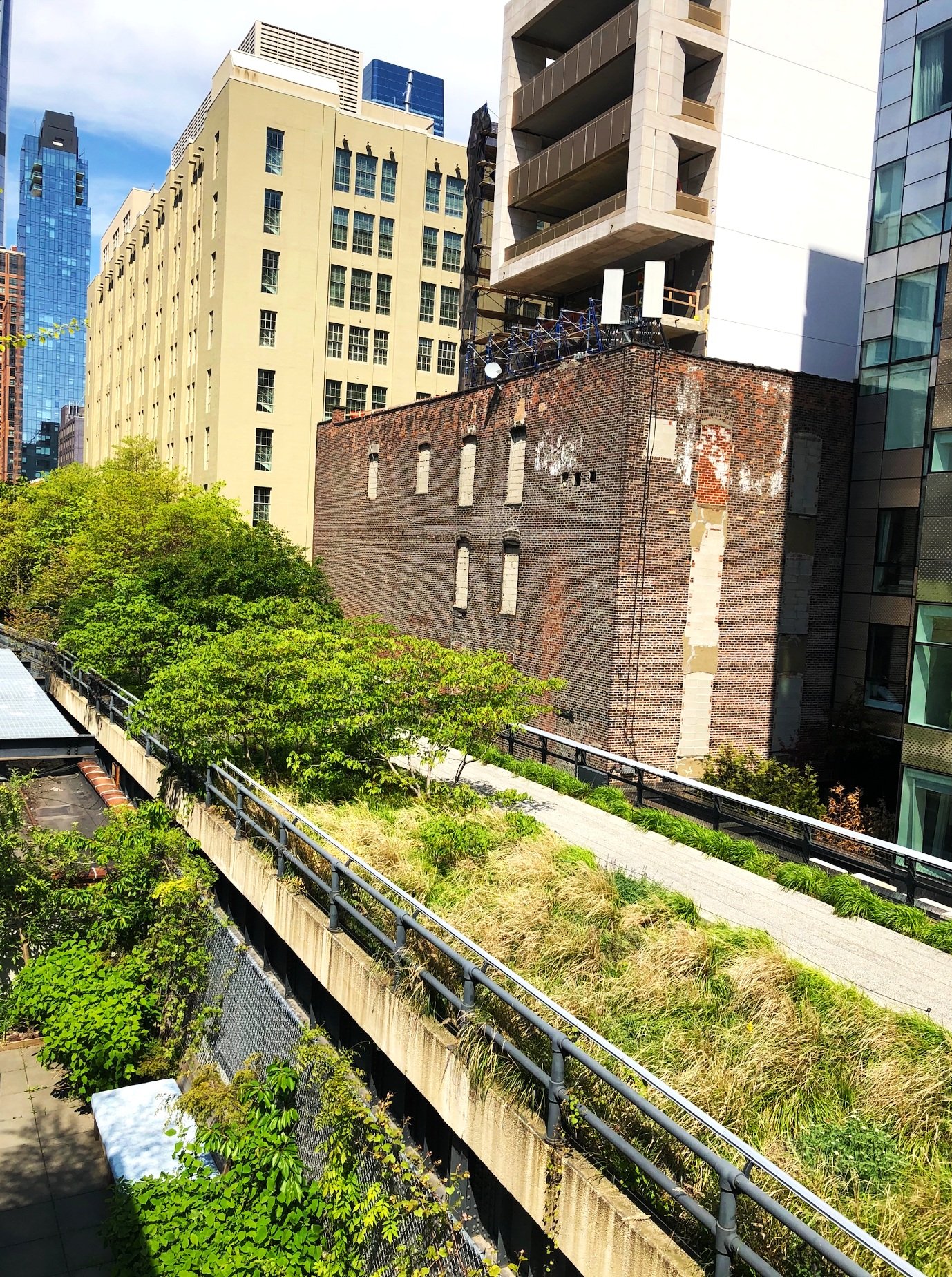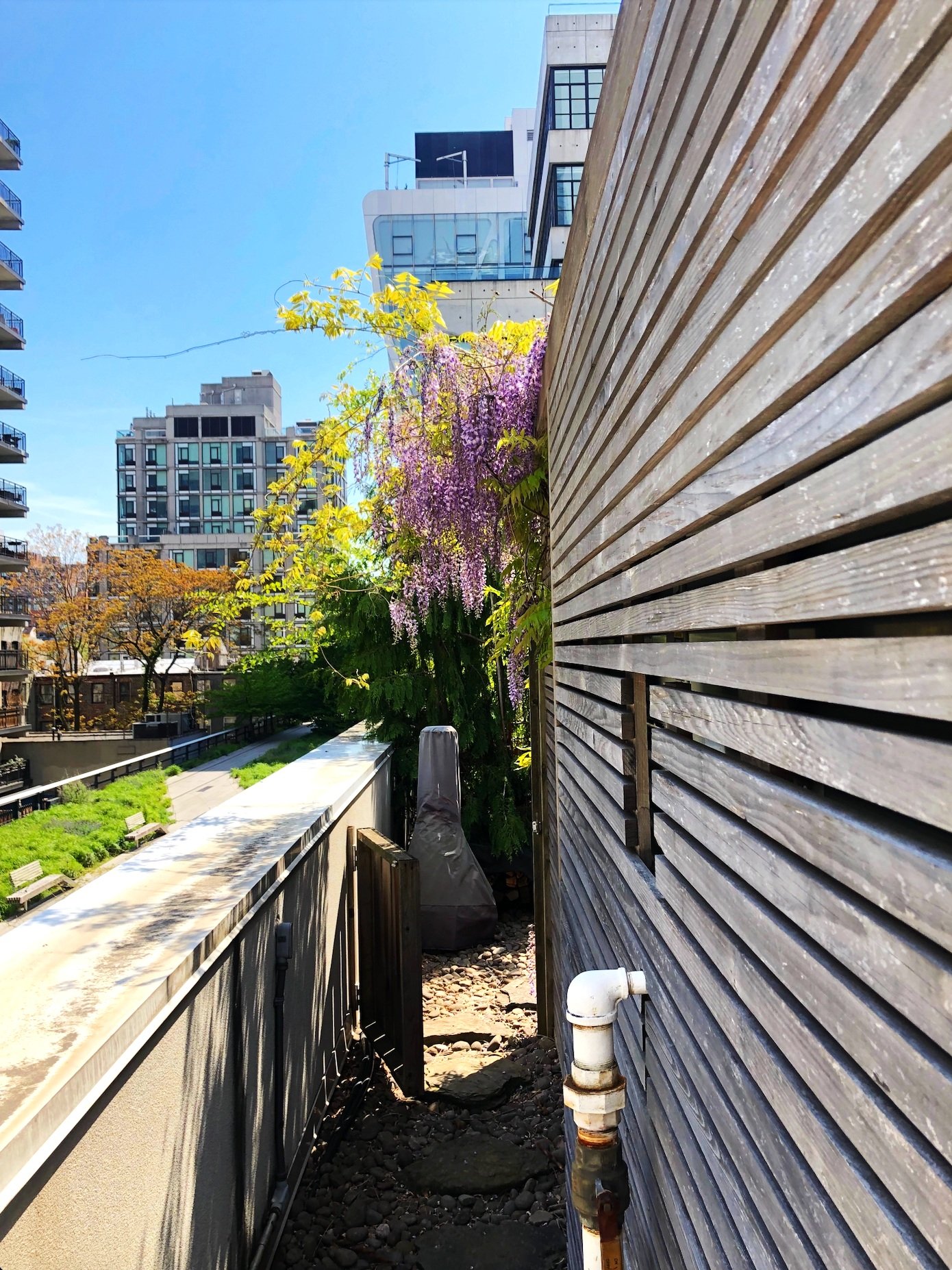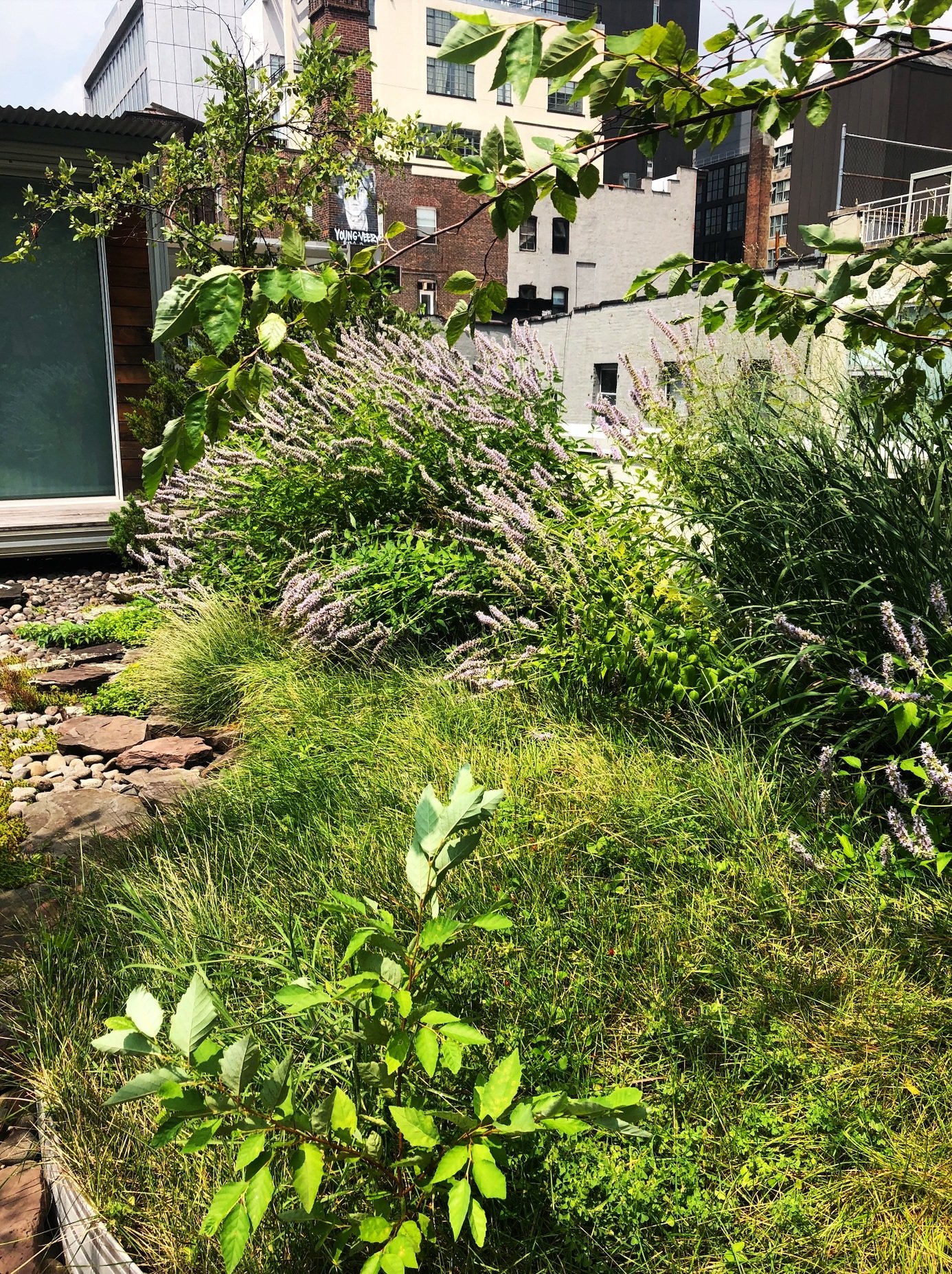
Hidden Gardens - High Line
A sequence of four secreted gardens loft above a renown Chelsea contemporary art gallery adjacent to New York’s favorite new park. Views seamlessly link the verdant spaces to the famed High Line from above.
A private enclave huddles next to the busy greenway separated by driftwood fencing draped in wisteria and grape vines. Narrow stepping stones lead to more HVC hugel patches of green roof creating a cozy reading or napping nook. The faint din of ethereal voices floats through the driftwood. Espalier fruit trees and berry bushes offer surprising and nourishing snacks.
Upstairs doors lead to a large open lounge surrounded by a lively hedge of Anabelle hydrangeas, blueberries, hyssops, and little bluestem grasses punctuated by river birch and Alaskan cedar. More Amethyst wisteria climb over another JWBC arbor and up a Green Screen wall. All in all a perfect place to entertain, dine, lounge, or furtively spy on the happy hoards strolling the converted elevated rail line and inhabiting the renovated warehouses and new towers of glass, steel, and stone. A voyeur’s dreamscape.
Beyond the cedars, natural pavers lure to a small wooden gate concealed behind. Through this portal the path parallels the High Line, finally opening up to a serene secret garden hosting a yoga studio. Here the lines between architectural and natural, public and private, truly and delightfully blend and blur. Meadow grasses and wildflowers carpet the hugel roof mound erasing the parapet and drawing the eye to the vanishing bustling ribbon of green through the transformed industrial landscape below. Thyme and sedum drip from shallow containers and eat up the stony ground. Moss grows in the shady nooks and crannies. Eastern red cedars volunteer anywhere they gain foothold. A harmonious inimitable balance of cloistered sanctuary and urbanity.
Attention to detail, from microbial to macroscopic, biological to mineral, help to coalesce this unparalleled composition creating a one of a kind experience. Whether it be the fruiting of the fungi or moss, or lichen blossoming the locally sourced stone, or the glint of distant glass, no element of design is too minor or incidental to not affect the whole, contrasting texture, color, light, and shadow.
Weeding becomes performance art; a three dimensional editing process. Migrating species are selectively culled based on aggression. Others are controlled though the art of bonsai, such as cedars and birches. Even moss is propagated and transplanted. A delicate synchronicity sought.
But it doesn’t end there. Beyond the JWBC barndoor lies a secret, secret garden. This one creates food and soil! Ross Martin Design’s best example of high-end regenerative garden design[Images?], not only are vegetables grown and nourished, so are microbes. A complex compost system regenerates soil from the gardens’ spent biomass which goes back into the container and bed ecosystems. No waste, no fertilizer, and a thriving microbial community all within ear shot of the High Line and three stories above the street.


























